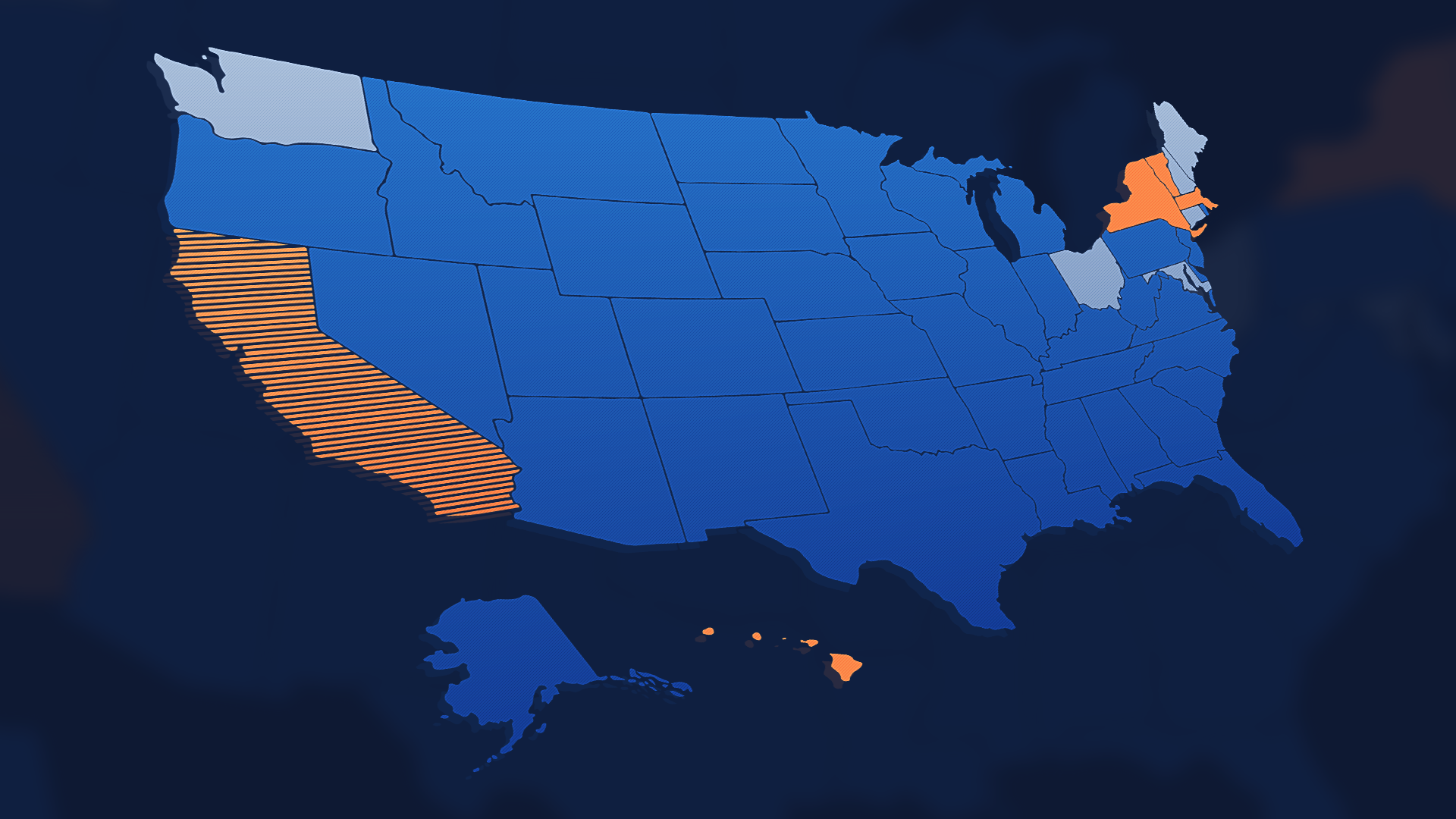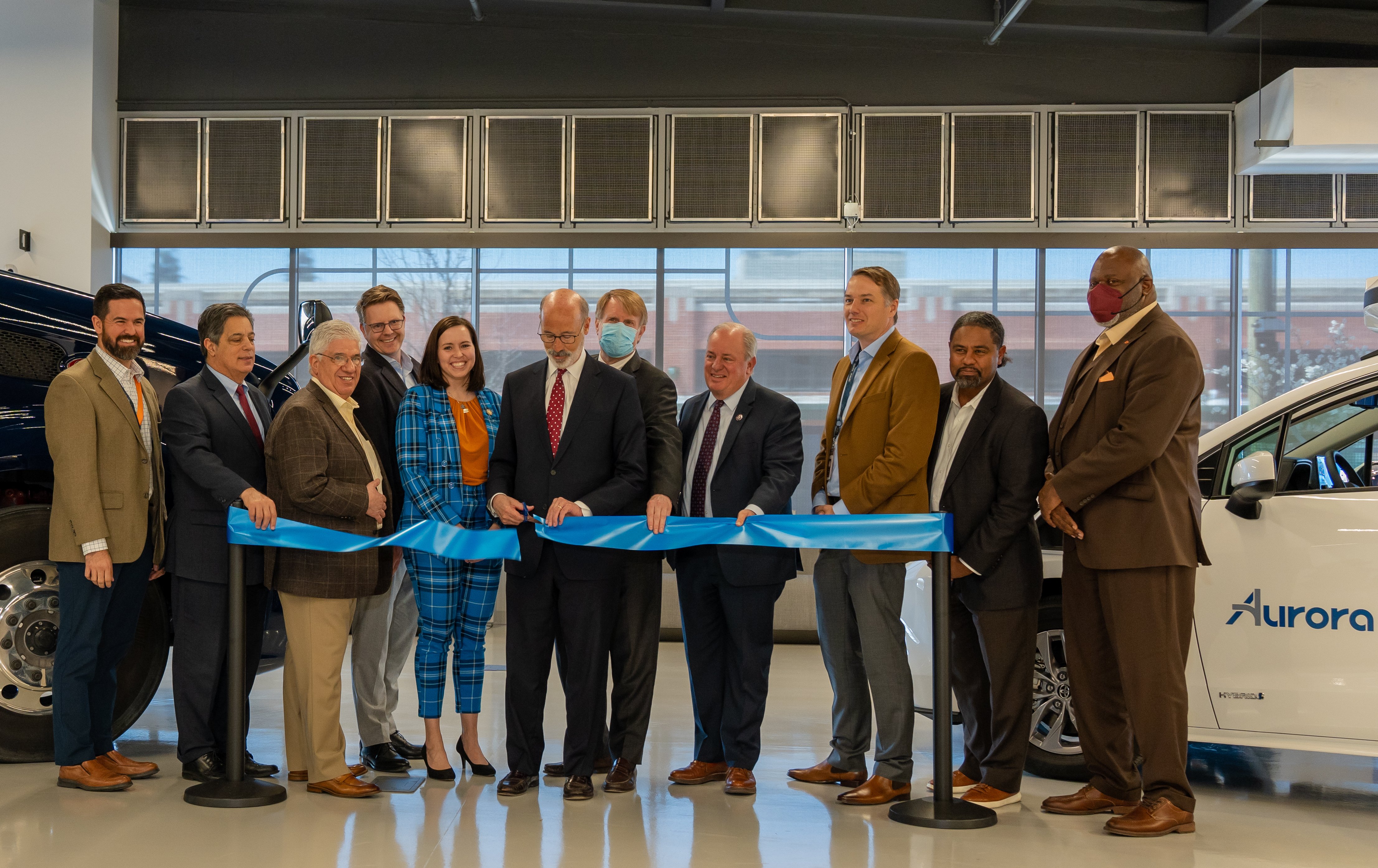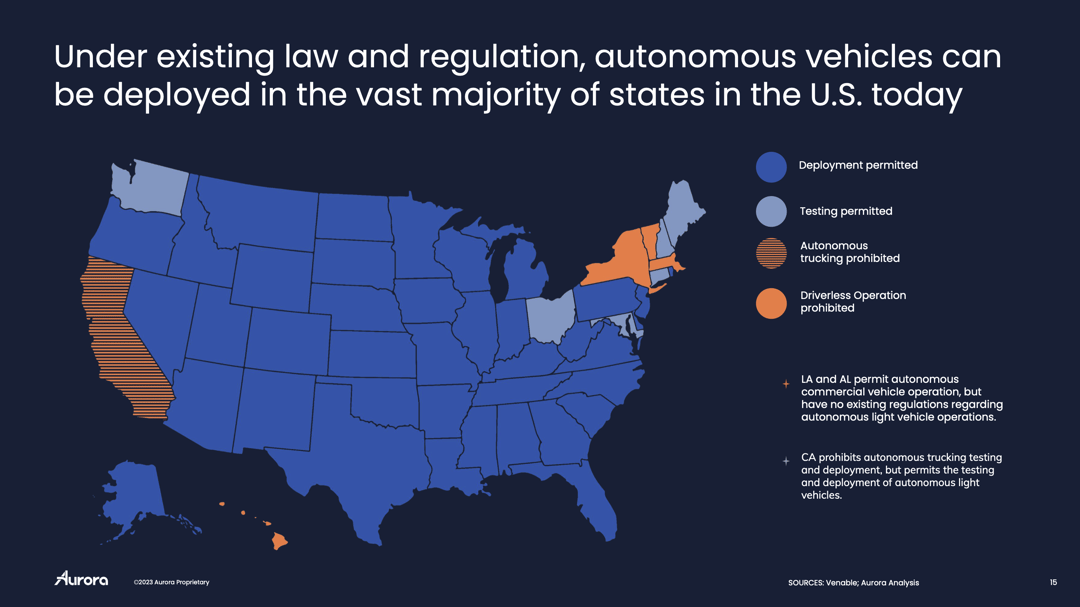Paving the way: Partnering with regulators to build an autonomous future
From our leaders | March 28, 2023 | 4 min. read

There’s a lot more to broadly deploying autonomous vehicles than developing safe technology. Building a business around self-driving semitrucks and cars means fostering an ecosystem in which our products can benefit customers, consumers, and the general public. While this includes building a scalable business model and deep partnerships with our partners, we are also focused on coordinating with regulators and public officials to deploy our technology responsibly.
Today, Aurora’s autonomous semitrucks haul commercial freight on public roads in Texas. When we are ready to operate without a vehicle operator, existing law supports our ability to do so. We want to share how we’ve prioritized our values of transparency and trust to build strong relationships with leaders in federal and state governments—helping pave the way for the safe deployment of our autonomous technology.
Let’s start by acknowledging that both regulators and autonomous vehicle companies like Aurora have the same goals: safer roads, efficient use of our nation’s infrastructure, and a more robust supply chain. We are mission-aligned.
When engaging with government leaders, our first objective is to listen—understanding the perspectives of legislators, regulators, and their constituents creates opportunities to align priorities. Then, we share information to help fill in any gaps in their understanding of our technology, business model, and path to market. Breaking down misconceptions and sharing our progress in an open, transparent dialogue helps ensure policymakers are never surprised by when and where we deploy our autonomous vehicles.
 Former Pennsylvania Governor Tom Wolf, state legislators, and local officials joined the Aurora team for the grand opening of our headquarters in Pittsburgh.
Former Pennsylvania Governor Tom Wolf, state legislators, and local officials joined the Aurora team for the grand opening of our headquarters in Pittsburgh.
This is an approach we’ve taken at both the state and federal levels. When I speak with legislators and regulators, I hear a story of optimism, enthusiasm, and momentum. From State Senators who are small business owners looking to move their product faster, to Members of Congress who want to provide more transportation options for their children with disabilities, support for autonomous vehicles is continuing to grow.
At the state level, the vast majority of states allow the deployment of autonomous vehicles. Not only does current law allow us to deploy without vehicle operators in our launch lane in Texas when ready, we’ve seen encouraging progress elsewhere as well. Along with other states that enacted laws or adopted regulations to support driverless operations in 2022, Pennsylvania passed landmark legislation to lift a restriction on autonomous vehicle operations and now allows for driverless testing and deployment. Meanwhile, in several jurisdictions, policymakers have voted down or held back proposals that sought to stall the continued deployment of autonomous vehicle technology.
 Under existing law, we are able to launch our commercial autonomous trucking product when we are ready.
Under existing law, we are able to launch our commercial autonomous trucking product when we are ready.
At the national level, we are not dependent on new federal legislation to launch our autonomous trucking product. Existing federal laws and regulations govern not only the requirements for the design and performance of vehicles themselves, but also the interstate operations of autonomous heavy-duty vehicles. We are pleased to see the Federal Motor Carrier Safety Administration re-initiate a rulemaking proceeding to facilitate the safe introduction of autonomous heavy-duty vehicles on U.S. roads, and Aurora submitted our perspective to aid in this important effort. Highlighting our cutting-edge technology and holistic approach to safety, we offered suggestions on how the FMCSA can leverage industry insights and collaboration to prioritize safety while supporting efficient integration of autonomous semitrucks into U.S. fleets. Work in this and other areas has been encouraging, and we are in full support of the Autonomous Vehicle Industry Association’s federal policy framework—including policies that create good jobs and promote safety.
We are also continuing to educate and prepare the public to benefit from autonomous vehicle technology. Our team is working transparently with law enforcement in the jurisdictions in which we operate, and have provided first responder guides for both our autonomous semitrucks and passenger vehicles. In states like California that are considering new autonomous vehicle regulations, we’ve seen former law enforcement officials speak up on the benefits of autonomous vehicle technology.
Ultimately, we don’t see these conversations with legislators and regulators as limited to any single piece of legislation or regulation. As autonomous technology advances, we will continue active dialogues around how best to bring its benefits to communities nationwide.
As someone who spent years working in federal and state government, I look forward to continuing this collaboration, delivering the value of self-driving vehicles to our customers, and ultimately making the world safer, especially for my son and two daughters.
Cautionary statement regarding forward-looking statements
This blog post contains certain forward-looking statements within the meaning of the federal securities laws. All statements contained in this blog post that do not relate to matters of historical fact should be considered forward-looking statements, including but not limited, to those statements around: our expectations regarding the laws, rules and regulations that will be in place at the time Aurora is prepared to operate vehicles without a vehicle operator or at the time Aurora is ready to launch its autonomous trucking product; Aurora’s ability to develop and launch a commercial product; and our expectations regarding the benefits that self-driving vehicles may provide to third parties. These statements are based on management’s current assumptions and are neither promises nor guarantees, but involve known and unknown risks, uncertainties and other important factors that may cause our actual results, performance or achievements to be materially different from any future results, performance or achievements expressed or implied by the forward-looking statements. For factors that could cause actual results to differ materially from the forward-looking statements in this blog post, please see the risks and uncertainties identified under the heading “Risk Factors” section of Aurora’s Annual Report on Form 10-K for the year ended December 31, 2022, filed with the SEC on February 21, 2023, and other documents filed by Aurora from time to time with the SEC, which are accessible on the SEC website at www.sec.gov. All forward-looking statements reflect our beliefs and assumptions only as of the date of this blog post. Aurora undertakes no obligation to update forward-looking statements to reflect future events or circumstances.
As the Head of Government Relations, Gerardo Interiano leads the effort to engage with federal, state, and local governments as Aurora helps define the future of self-driving policy and ensures safety is at the core of everything at the company. Prior to Aurora, Gerardo worked at Google where he helped launch Google Fiber and Google’s Self-Driving Car Project (now Waymo) in the Southwest. He also served in various roles with U.S. government officials.